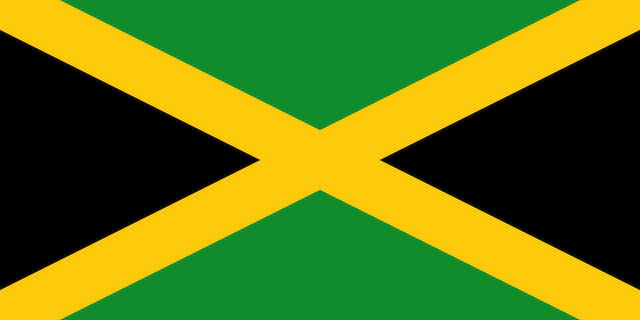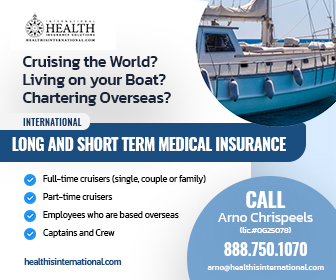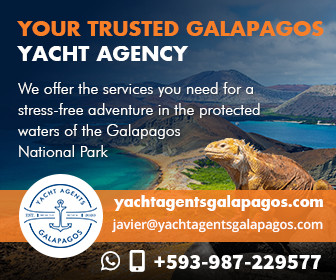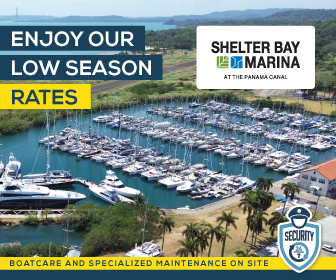Jamaica - Facts
- Jamaica is a beautiful island with hundreds of miles of coastline and an abundance of natural harbours. It lies in the Caribbean Sea, 340NM north-east of mainland Central America. Its close neighbours are Haiti, to the east, and Cuba, to the north. There are mountains and plateaus to the interior and east of the island. Kingston is the country’s capital and largest city.
- Jamaica has a total population of 2.9 million people and is the third largest island in the Caribbean Sea, after Cuba and Hispaniola. The official language is English, but the primary spoken language is an English-based creole called Jamaican Patois (or Patwa).
- The official currency in Jamaica is the Jamaican Dollar. All Inclusive resorts and key tourist areas also use US Dollars. For specifics, see General Info.
- Jamaica observes Eastern Standard Time (UTC−05:00) all year and does not observe daylight saving time.
- For most of the year, the easterly trades blow 20 knots. The southeast corner (Kingston to Portland Bight) has an average 5 knots higher. At night cool mountain air slides down the mountains to create an offshore breeze (Katabatic winds). Tidal variation in Jamaica is about one foot. See Weather below for more details.
- Cruising around Jamaica is varied with a multitude of anchorages, small fishing villags plus the inevitable over-developed tourist centers. One hindrance is that you have to check in and out of each port visited and finding a secluded beach with no development is probably the greatest challenge. Three weeks should give you plenty of time to circumnavigate the Island. Anchoring in Jamaica is normally fairly easy as the bottom is usually sand and turtle grass. The marina in Port Antonio, the Montego Bay Yacht Club and the Royal Jamaica Yacht Club in Kingston are popular places with cruisers. All three facilities have very good security.
- There are a great number of fish traps set off the coast of Jamaica. They normally extend out to the 100 feet mark and thus along the coast, one should keep a watchful eye. Keep about one mile offshore as you move around the island.
- Repair facilities are few and far between. All three docking facilities mentioned above can assist with a number of repair services, and the boatyards at Port Antonio and the Royal Jamaica Yacht Club have haul out facilities. For more details, see Yachting Essentials.
Read and Post Related Comments
If you have information for this section, or feedback on businesses used, please let us know at editor@noonsite.com. We also welcome new information about businesses you have used (see Related Businesses).
Next Section: Profile: Security
Related to following destinations: Jamaica
Country Navigation
Courtesy Flag Discounts


YachtFlags.com provides high quality courtesy flags that are manufactured in durable Knitted Polyester fabric. Knitted so that the fabric itself does not deteriorate in the constant movement that marine flags are usually exposed to, and polyester so that the flag does not weaken in the strong UV-light usually found in the main sailing areas of the world.
YachtFlags.com offers a discount to Noonsite members.
Use the coupon code NOONSITE-5A2B when checking out to get 10% off today.
Buy Now On YachtFlags.comMain Ports - Jamaica
Courtesy Flag Discounts



YachtFlags.com provides high quality courtesy flags that are manufactured in durable Knitted Polyester fabric. Knitted so that the fabric itself does not deteriorate in the constant movement that marine flags are usually exposed to, and polyester so that the flag does not weaken in the strong UV-light usually found in the main sailing areas of the world.
YachtFlags.com offers a discount to Noonsite members.
Use the coupon code NOONSITE-5A2B when checking out to get 10% off today.
Buy Now On YachtFlags.comFormalities
Courtesy Flag Discounts



YachtFlags.com provides high quality courtesy flags that are manufactured in durable Knitted Polyester fabric. Knitted so that the fabric itself does not deteriorate in the constant movement that marine flags are usually exposed to, and polyester so that the flag does not weaken in the strong UV-light usually found in the main sailing areas of the world.
YachtFlags.com offers a discount to Noonsite members.
Use the coupon code NOONSITE-5A2B when checking out to get 10% off today.
Buy Now On YachtFlags.com






I visited Jamaica with my boat Begonia in Jan 2025. I am a USA registered vessel and used the online system to pre-pay for my cruising permit. I requested 6 months (expecting to pay $150), however the system charged me $300. I paid and raised the issue immediately. It seems that since USA vessels are permitted to stay for a year (rather than the 6 months for other vessels), that the system automatically charges for a full year 2 x $150, despite selecting the 6 month permit.
I needed to follow up a few times. But after 2 weeks of cruising we departed Jamaica (so definitely didn’t need a 1 year cruising permit) – and after departing I reminded the powers that be that I was mis-charged and was requesting a refund.
The refund was duly granted and paid to my credit card – whew.
So just a reminder if anyone else has this issue, to follow up and request the refund.
Oops – that should say Jan 2025 (i’m obviously still getting used to the change in the year!).
Thank you Maryanne for this useful feedback. We’d love to hear how your 2 weeks cruising Jamaica went, please do share more details.
Feedback from SV Kookaburra:
We checked into Errol Flynn Marina (EFM) on Feb 15, 2023, and had a wonderful stay in Port Antonio. Marina is very laid back with good facilities. We didn’t pay any fees to check in to Jamaica as we decided to not get the cruising permit ($150 US) and just do land travel from EFM. Short term dockage was $0.95 US/day, or you can anchor out at $25 US/day.
Fruits & veggies abound at the street market a short walk out of the marina.
A car was $70-90 US/day with weekly rates available, but an overnight in Kingston (orchid cottage +++++) with provisioning at the Price smart and some mountain touring was excellent. We rented a car on another day and went to Ocho Rios to do Dunn’s river falls, big cruise ship spot, and the next morning did Nanny Falls in Mooretown – the polar opposite of a tourist site.
Customs & Immigration was easy and straight forward.
Keith Pomeroy
We are currently in Jamaica. Though not technically open, there has been a trickle of boats allowed to enter and cruise. We have wonderful freedom here, and few restrictions. Contact the Montego Bay Yacht Club before coming.
Although Jamaica reopened airports to foreign visitors on June 15, I was informed July 1 by Errol Flynn Marina in Port Antonio that seaports are NOT open to foreign yachts and that any arriving will NOT be allowed to enter the country.
Thank you for posting this information – I am very glad you got a response from Errol Flynn Marina. We will amend Noonsite’s information.
Port Antonio – Just had my boat hauled for its annual anti-foul application along with other work. George and Flower did a fantastic job and looked after everything yet again. Nice people.
The PAJ have appointed another manager for the facility. George has done a wonderful job standing in as manager for the past 6 to 8 months (yet again) after the last manager’s resignation. He will now be expected to train up a third manager. The gentlemen and his team are so thorough, helpful and pleasant I have no idea why the PAJ have overlooked him again and not appointed him manager.
Posted on behalf of Miki Barzam on “Two Oceans”
Negril Bay – technical support could be available at the water-sport center of the resort on the beach. Ask for the hourly rate beforehand and haggle if necessary. An electrician named Santos did a good job making one good alternator out of two bad ones.
Let me recommend u on a very good and friendly lady – Ingrid- that took us to an amazing day trip in Jamaica. She has a safe and comfortable car and she took us with our kids to the most Amazing spots around Kingston but she can come to other location.
I really recommend. You will enjoy for sure as we did 876-788-5655 or 876-425-2582 and email is imevans5@hotmail.com
Yes it’s misleading, having looked at Frank Virgintino’s guide it clearly states in one place that Port Kaiser should be avoided except in an emergency (as it’s a commercial port), and then in another section on approaches to Jamaica does indicate that clearance can be made at Port Kaiser.
This is a mis-print and the new edition of the guide currently being worked on will be amended accordingly. So – in short – Port Kaiser is not a clearance port and not a port for cruising yachts. Frank Virgintino apologises for any confusion that might have been caused.
Posted on behalf of Brian Anderson (S/V Red Shoes):
Any advice please: my cruising guide to Jamaica indicates one can “clear in” at Port Kaiser if arriving from the south. But the Port does not seem to offer any welcome to yachts, and no Customs services. Is the cruising guide mistaken? Thank you for any information.
Posted on behalf of Andreas and Cordula Raimund of SY Aphrodite (Germany):
After three years we visited Jamaica for the second time. We enjoyed the Montego Bay Yacht Club and also especially Port Antonio. Anchorages are never crowded, people are extremely friendly and we felt never unsafe.
But the best is the countryside and the Blue Mountains. We drove with our guide (David Rhoden tel. +1 876 385-1305) to the Blue Mountains for several days. David showed us the country, nature and the mountains.
We will surely come back. Thanks, David.
We really know nearly all about diesel engines. But we had a problem with the pomp. We could not find out. In Montego Bay there is Rohan, he is very special about that. In 5 minutes he knew the solution to our problem. Phone (876)428-4025 and (876)952-8958.
Additional information provided by Elessar
We cleared in Bowden Harbour, no problem. There we have said, next harbour is Jamaican Royal Yacht Club in Kingston. We arrived in normal time, they had got the paper “Bowden Harbour – JRYC” also in normal time.
But on Saturday morning they came, give us the paper for next harbour and took the money. It was about 7.30a.m., but we asked not for coming so early. All of us had been still sleeping!
We paid on Saturday at 8 a.m. to the customs in Kingston 65 USD!
Posted on behalf of Steve Gould, who writes:
I have a report on the danger of sailing along the Jamaican coast at night time. I filed an “Official Complaint” with the Jamaican Coast Guard after their attempted boarding of my vessel. Their vessel was an “open fisherman” which was sitting and waiting with no lights until within 200 yards of us.
The only light they displayed throughout the episode was a bow light they turned on after charging at our vessel. They had no radio, no visible markings, barked for me to “stop your vessel” and then barked “we are boarding your vessel” repeatedly.
They made many attempts to board over the period of one hour and were only held back by my clear intention to repulse them with a machete. It is clear the Coast Guard is a danger to cruisers. The manager of the Errol Flynn Marina told me he had a similar encounter.